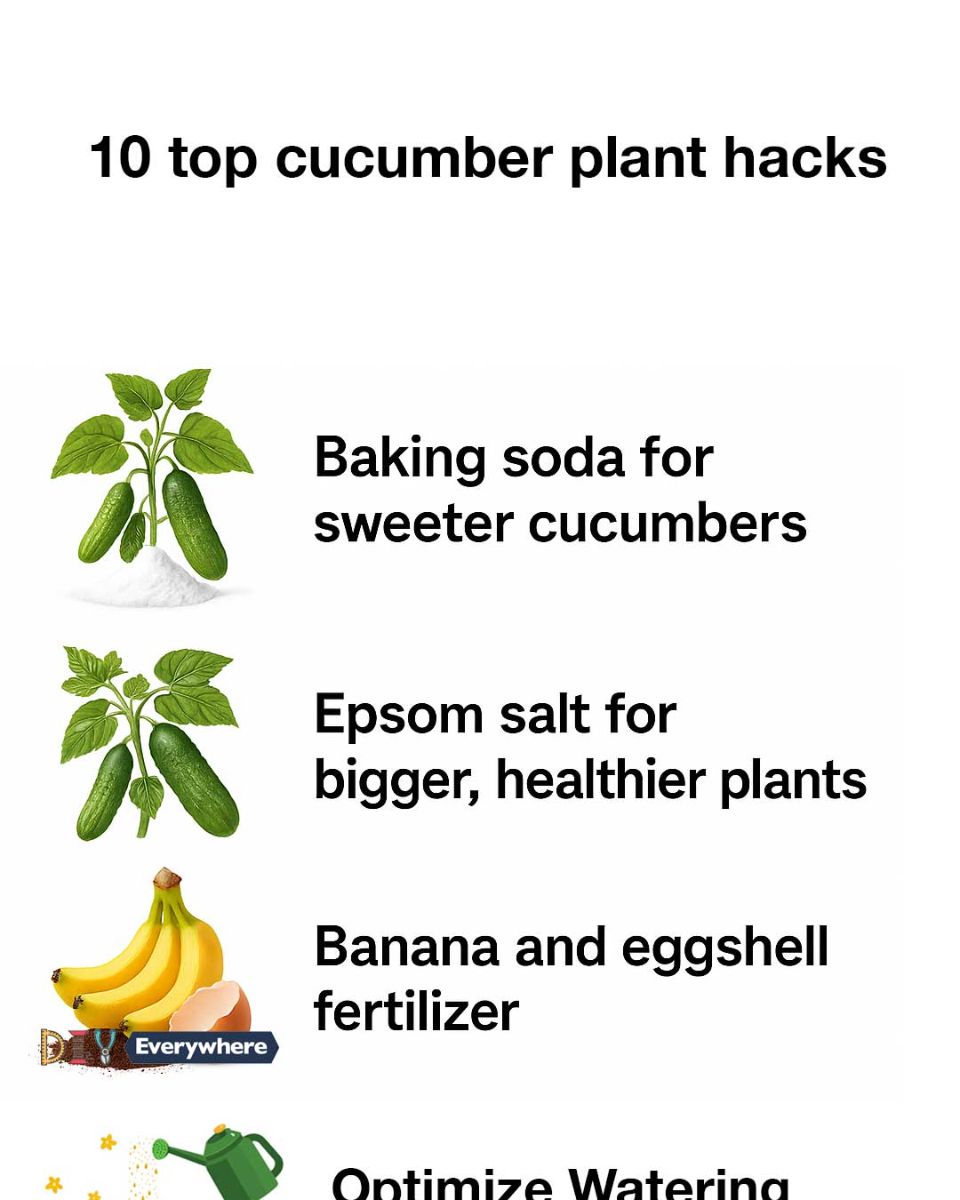Cucumbers are a staple in many gardens due to their refreshing taste and versatility in culinary uses. However, growing cucumbers can sometimes be challenging, as they require specific conditions to thrive. From soil quality to pest control, there are numerous factors that can affect the health and yield of your cucumber plants.
Fortunately, there are several hacks that can help you optimize the growth and quality of your cucumbers. Whether you’re a seasoned gardener or a beginner, these tips will provide you with the knowledge you need to cultivate healthy and productive cucumber plants. In this article, we’ll explore ten top hacks that can make a significant difference in your cucumber gardening efforts.
1. Use Baking Soda for Sweeter Cucumbers
Baking soda is a simple yet effective way to enhance the sweetness of your cucumbers. By altering the pH level of the soil, baking soda can reduce the bitterness that sometimes affects cucumbers. To use this hack, dissolve 1 tablespoon of baking soda in 1 gallon of water and apply it to the soil around your cucumber plants once every two weeks.
This method works best when started early in the growing season, as it allows the cucumbers to develop a sweeter flavor as they mature. Be sure not to overapply, as too much baking soda can harm the plants by making the soil too alkaline.
2. Boost Growth with Epsom Salt
Epsom salt is rich in magnesium, an essential nutrient that promotes healthy growth in cucumber plants. Magnesium helps in the photosynthesis process, ensuring that your plants can produce the energy they need to grow. To use Epsom salt, dissolve 1 tablespoon in a gallon of water and spray it on the leaves of your cucumber plants every two weeks.
Additionally, you can mix Epsom salt into the soil before planting by adding 1 tablespoon per square foot of soil. This will help establish a strong foundation for your plants, leading to more vigorous growth and increased yield.
3. Create a Banana and Eggshell Fertilizer
Bananas and eggshells are excellent sources of potassium and calcium, respectively, both of which are crucial for cucumber plant health. To make a homemade fertilizer, blend two banana peels and a handful of crushed eggshells with a cup of water. Let the mixture sit for 24 hours to allow the nutrients to leach into the water.
Once ready, strain the liquid and use it to water your cucumber plants every two weeks. This natural fertilizer will provide your cucumbers with the nutrients they need to develop strong roots and produce abundant fruit.
4. Optimize Watering with a Drip Irrigation System
Cucumbers require consistent moisture to thrive, and a drip irrigation system is an efficient way to ensure they receive the right amount of water. Drip irrigation delivers water directly to the plant’s roots, reducing evaporation and water waste.
To set up a drip irrigation system, you can purchase a kit from a garden center or create your own using a hose, emitters, and connectors. Position the emitters near the base of each cucumber plant and set a timer to water the plants early in the morning or late in the afternoon to minimize evaporation.
5. Train Vines with a Trellis for Better Yield
Training cucumber vines to grow vertically on a trellis can improve air circulation and sunlight exposure, leading to healthier plants and higher yields. A trellis also makes harvesting easier and reduces the risk of fruit rot by keeping cucumbers off the ground.
To build a simple trellis, use wooden stakes or metal poles and attach a sturdy netting or wire mesh. As the cucumber vines grow, gently guide them onto the trellis, securing them with soft ties if necessary. Regularly check the vines to ensure they are properly supported and adjust as needed.
6. Mulch to Retain Moisture and Suppress Weeds
Next Page

